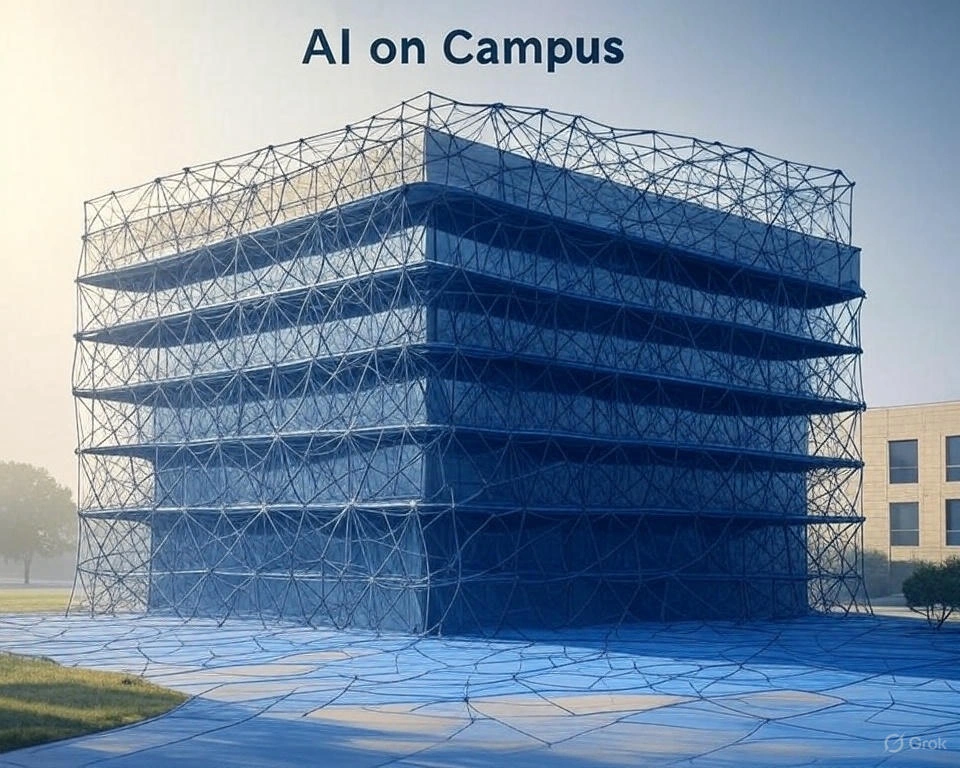
AI on Campus – Mapping Readiness and Governance for AI Adoption in Teaching and Research
Artificial Intelligence (AI) is no longer a future ambition for universities — it’s here, reshaping the way students learn, academics teach, and researchers make discoveries. But with the excitement comes a reality check: successful AI adoption in Higher Education isn’t about installing a few clever tools. It’s about being ready — technically, ethically, and culturally — and having the governance in place to manage the risks alongside the rewards.
This is where Enterprise Architecture (EA) can turn ambition into action.
Why AI Readiness Matters for Universities
AI in Higher Education isn’t one-size-fits-all. What works in a computer science lab might fail in the humanities faculty. Readiness means understanding:
Where AI can have impact — from personalised learning to automated marking, from predictive student support to research data modelling.
What needs to be in place first — skills, infrastructure, funding, and cultural openness.
How risks will be managed — covering bias, academic integrity, intellectual property, and student privacy.
Without this, AI adoption risks becoming piecemeal, inconsistent, and potentially damaging to institutional trust.
Mapping AI Readiness with Capability Models
Using capability maps, universities can assess their preparedness across teaching, research, and operational contexts:
Teaching & Learning Capabilities — readiness to integrate AI into curriculum design, assessment workflows, and learning analytics.
Research Capabilities — support for AI-assisted modelling, data processing, and collaboration across disciplines.
Infrastructure Capabilities — compute capacity, data platforms, and security frameworks needed to run and manage AI workloads.
People & Skills Capabilities — staff and student AI literacy, faculty training programs, and support structures.
By visualising these capabilities, leaders can quickly see where investments, policies, or skills development are required.
Governance – The AI Safety Net
Good governance is the difference between responsible adoption and unintended consequences. For Higher Education, AI governance should address:
Ethics and Fairness — ensuring AI systems are transparent, explainable, and free from bias.
Data Privacy and Security — aligning with local and international standards, especially for sensitive student and research data.
Academic Integrity — policies on AI use in coursework, examinations, and publications.
Sustainability and Maintenance — ensuring AI systems are updated, monitored, and aligned with the university’s broader strategy.
An EA-driven governance framework creates clarity on who decides what, how compliance is ensured, and how to adapt as AI evolves.
From Pilot Projects to Campus-Wide AI
The smartest universities don’t rush to implement AI everywhere at once. They:
Start with Use Cases — quick wins that demonstrate value, like AI-powered research data analysis or student support chatbots.
Build the Foundations — data governance, infrastructure upgrades, staff training.
Scale with Confidence — expanding AI adoption to teaching, research, and administration with governance already in place.
Continuously Improve — revisiting readiness and governance as technologies and regulations shift.
The Role of Enterprise Architecture
Enterprise Architecture helps universities connect the dots between AI ambition and institutional reality:
Linking strategy (where we want to go) with capabilities (what we can do now).
Mapping dependencies so no faculty or research centre is left behind.
Embedding governance into the AI lifecycle — from experimentation to operationalisation.
With the right EA-led approach, universities can embrace AI in a way that’s ethical, equitable, and effective.
Final Thought
AI adoption in Higher Education isn’t just a technology decision — it’s a strategic, cultural, and governance challenge. The question isn’t “Should we adopt AI?” but “Are we ready to adopt AI well?”
Colloquial helps universities visualise readiness, map capabilities, and establish governance that ensures AI becomes a trusted part of academic life — not a passing experiment.
Ready to Take the Next Step?
Let Colloquial help you navigate the complexities of AI adoption in Higher Education. From readiness assessments to governance frameworks, we provide the tools, insights, and visuals that empower decision-making and deliver results. Together, we can make AI a responsible and transformative part of your academic ecosystem.
